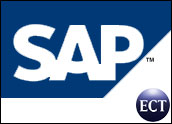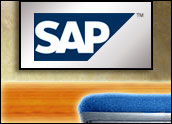
SAP is a company in transition.
The Walldorf, Germany-based enterprise software firm has been around since 1972, which makes it older than Microsoft. To hear observers and insiders tell it, the firm has been showing its age in recent years.
A combination of its massive size — it is the third-largest software company in the world — and a culture that valued preservation of the status quo have threatened to render the company irrelevant.
That was the old SAP.
New Attitude
“[In the past] I’ve … had my doubts about their ability to transform, but they’ve actually dramatically transformed the culture,” said Paul Greenberg, president of The 56 Group, an enterprise applications consulting services firm, who calls himself a “friendly critic” of SAP. “They’re actually trying to put the customer first, which has not been their historic culture.”
For a long time, SAP’s attitude had been “build it and they will come,” Greenberg told CRM Buyer. What it built in the early days was an enterprise resource planning (ERP) suite that offered everything a large enterprise might need — and a few things it didn’t need.
In recent years, however, the focus has been more on building a community around its software and then tapping that community for input on the products — not really a novel idea in the software industry.
For SAP, it was a sea change, Greenberg said.
“It goes to the level of the ordinary citizen,” he told CRM Buyer. “It’s a much more open and collaborative environment — just a dramatic change.”
Power of Community
SAP has created not only a developer community, but also communities of users and of “business process experts,” which it defines as people involved in methodologies and best practices. From those groups arose a mentor program, which assigns hands-on experts in the company’s products to provide an extremely advanced sort of tech support by proxy.
It’s a change born of necessity, said Jeff Comport, vice president and distinguished analyst at Gartner.
“There’s a phrase we’ve used: ‘the actions at the edges.’ You see commoditization around the core of ERP,” he told CRM Buyer. “Some of the challenges are such that as they move into these additional directions, not all of them are transactional or ERP in nature. The incremental revenue is in edge applications.”
As SAP targets more specialty functions — those that specific industries such as fashion or beverages or motorcycle manufacturing require — it diverts attention and resources away from its core ERP suite, Comport said.
“The message that they’ve had is innovation around a stable core. There’s a lot of lock-in that goes with these vendors,” he explained. “In a lot of ways, the default decision is a kind of incrementalism.”
In other words, SAP already has you as a customer. You discover new, specialized needs that aren’t addressed in the existing suite. Your choice, then, is either to find another vendor to address those needs or go with your existing vendor — SAP. By expanding to the edges and responding to customer demand for the “edge applications,” SAP keeps its customers locked in.
“If I want to lower my lock-in, it really takes a determined effort and a lot of long-term planning,” Comport said. “It’s a question of how much are you going to be locked in? It’s all a battle for how big should ERP be, and how much control should I give to a singe vendor?”
Evidence of Change
The changes in SAP’s culture are reflected in several outward ways: The move to a service-oriented architecture; the acceptance of the notion that it can’t build everything itself; and its embrace of the communities that surround it — partners, customers, users and developers.
“After years of developing the technology and platform to provide a single product strategy, SAP has executed a subtle shift to a portfolio strategy,” wrote Comport and fellow Gartner analyst Tim Payne following the appointment of Leo Apotheker as co-CEO with Henning Kagermann, who’s set to retire next year. “The challenge for SAP will be the continued rationalization of current product overlaps, product development alignment and innovation, and management of a multiproduct company. These challenges also face competitors such as IBM and Oracle.”
Ironically, said Greenberg, the changes now evident in the company are largely driven by a guy who isn’t even there anymore: Shai Agassi.
Agassi, whose company, TopTier Software, was acquired by SAP in 2001, was in line to succeed Kagermann as CEO, but resigned when Kagermann’s tenure was extended by two years.
He has gone on to establish Project Better Place, a company that is looking into alternative fuels and other ways to combat climate change.
Huge Impact
While at SAP, Agassi took charge of the company’s products. He drove the formation of the developer community, the NetWeaver development platform and the transition to a service-oriented architecture.
“His impact was huge on the company. He was the likely triggering reason for the changes they have undergone,” Greenberg said. “I got the impression he was genuinely committed to the transformation of the company. These guys just decided to carry the torch forward, which honestly was a huge surprise to me. They realized that when push comes to shove, what Shai was doing was great.”
Another indicator of the cultural change is SAP’s newfound willingness to accept that it doesn’t necessarily need to develop every one of its offerings from scratch. For a company made up of German engineers, this might sound a little like blasphemy.
This change in attitude is evident in SAP’s acquisition of the French business intelligence firm Business Objects.
Previously, it was Oracle that expanded its product offerings through wholesale acquisition, say Gartner’s Payne and Comport.
“Until the Business Objects acquisition, SAP had acquired mostly small vendors, with functionality that filled a small, but specific hole in SAP capability,” they observe.
With Business Objects, SAP not only bought the entire category, but also acquired a built-in customer base.
“Business objects brings to the table more than 45,000 customers, 7,000 partners — and it is designed to be agnostic, to run on every transactional platform. We want to keep that. It is unifying all information,” Kagermann said in his keynote at Sapphire 2008 Orlando, the company’s annual meeting for its customers and partners in the U.S.
It was a wise move, said Greenberg, who said SAP’s existing BI offering, SAP Business Information Warehouse, was “not a very good product at all.”
The acquisition was wise for another reason, he noted. Since IBM bought Cognos and Oracle purchased Hyperion, SAP was left with a competitive weakness in its portfolio. It needed an instant leadership position, and it got that in Business Objects, Greenberg said.












































